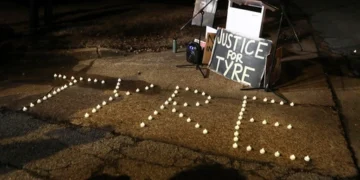Feb 19, 2025 Story by: Editor
Two years ago, a sheriff’s deputy collapsed and died at a police academy in Evansville, Indiana. Law enforcement officials initially described it as a routine training incident.
Seeking to understand whether such deaths were common and what factors contributed to them, The Associated Press conducted an investigation using public records and news reports. The findings revealed that at least 29 police recruits have died across the U.S. in the past decade while undergoing basic training to become officers.
The results surprised some experts, as no government agency or organization systematically tracks recruit deaths. Here are key takeaways from AP’s investigation.
Most Deaths Linked to Physical Exertion and Heat Rather Than Force
The investigation found that most recruits who died collapsed following intense physical activities during training.
Exercises such as lengthy obstacle courses, demanding sets of calisthenics, and timed runs—mandatory for recruits to pass—were often conducted in extreme heat or without adequate water breaks. Many of these deaths occurred on the very first day of physical training, which is notoriously grueling at some academies, while others happened later in the multi-month programs.
A smaller number of fatalities resulted from simulated combat training, including boxing, which caused physical trauma. One such case was that of Deputy Asson Hacker, who died in Evansville.
Medical examiners frequently cited heat stroke, dehydration, excessive physical exertion, and related conditions as primary causes or contributing factors in these deaths.
Black Men Disproportionately Represented Among the Deceased
Black men accounted for nearly 60% of the recruits who died, despite making up only about 12% of local police forces nationwide.
Experts point to a genetic condition—sickle cell trait—that could partly explain this disparity. This condition, more common among Black Americans, is caused by an abnormal gene in red blood cells.
While sickle cell trait does not typically affect daily life or lifespan, it can, in rare instances, lead to severe complications like heat stroke and muscle breakdown during intense physical training, particularly in hot conditions.
Medical examiners cited this condition as a contributing factor in several cases, including the death of 33-year-old Edgar Ordonez, who succumbed to exertional heat stroke last summer while training for the New York City Police Department.
Unlike the military and NCAA, many police departments do not screen recruits for sickle cell trait before hiring them. Additionally, many individuals carrying the trait are unaware of their condition.
The Centers for Disease Control and Prevention advises that those with sickle cell trait should stay hydrated, take regular breaks, and implement cooling measures during training to reduce health risks.
Recruit Deaths Appear to Be Increasing Amid Officer Shortages
The number of training-related recruit deaths seems to have risen in recent years, coinciding with an older and more diverse applicant pool being recruited to fill vacancies in law enforcement.
Most of these deaths have occurred since 2020, a period marked by the COVID-19 pandemic and heightened protests over police brutality, which led to increased officer shortages. Many of those who died were in their 30s and 40s.
In 2023, a researcher published a medical journal warning that such deaths were preventable with appropriate precautions and urged police leaders to take action.
Despite this, recruit fatalities have continued. In 2024 alone, at least five police recruits have died in training incidents, from Tennessee to Massachusetts.
Lack of Recognition, Benefits, and Investigations for Deceased Recruits
Because many recruits had not yet been sworn in as officers at the time of their deaths, their names are not eligible for inclusion on the National Law Enforcement Officers Memorial in Washington, D.C. In some cases, they are also excluded from state memorials, and their families do not qualify for state benefits provided to officers who die in the line of duty.
Additionally, while national organizations closely monitor the circumstances surrounding sworn officers’ deaths, no dedicated group tracks recruit fatalities, making it difficult to identify trends and prevent further incidents.
Workplace safety agencies have the authority to investigate police academy deaths in some states, but in others, they do not.
Ultimately, the responsibility for investigating these deaths often falls to the individual police departments operating the academies, along with local prosecutors and medical examiners. This decentralized approach can result in inconsistent scrutiny of such fatalities. Source: Washington Post

















